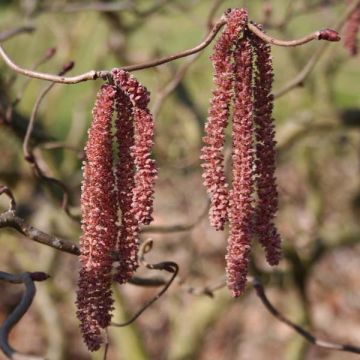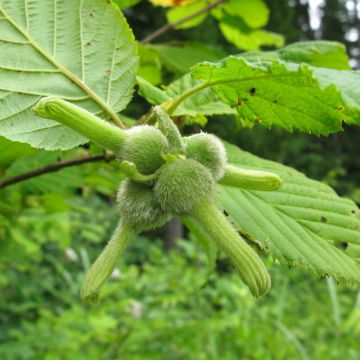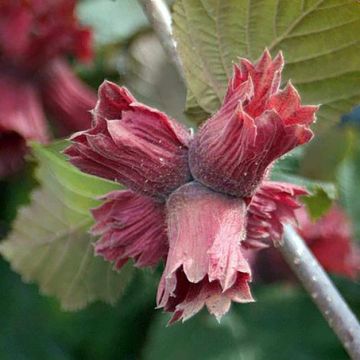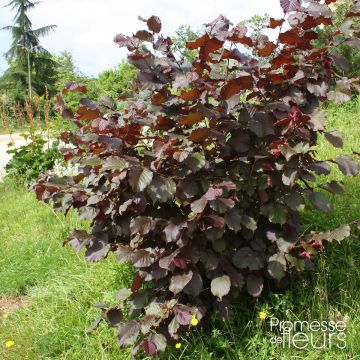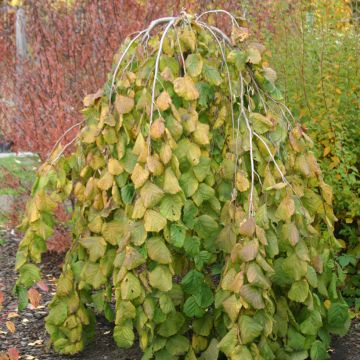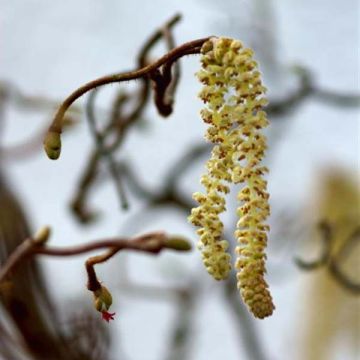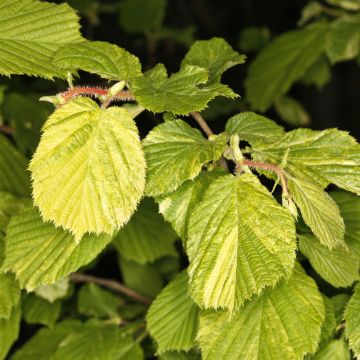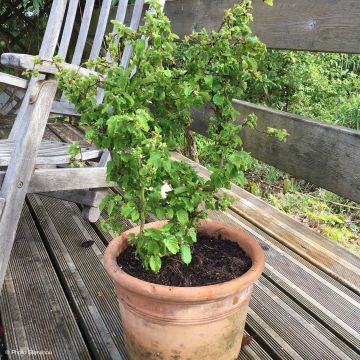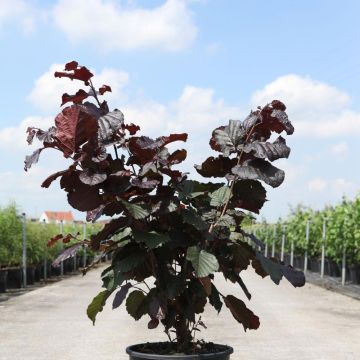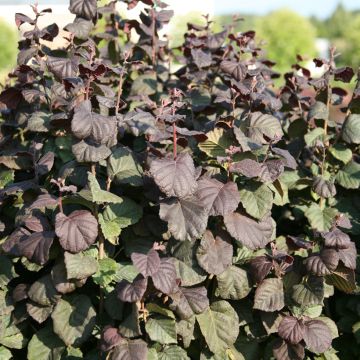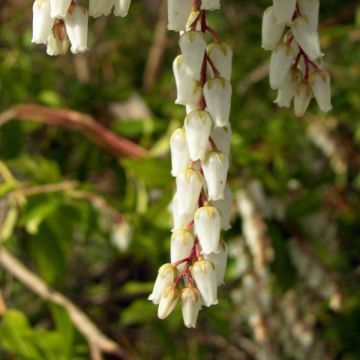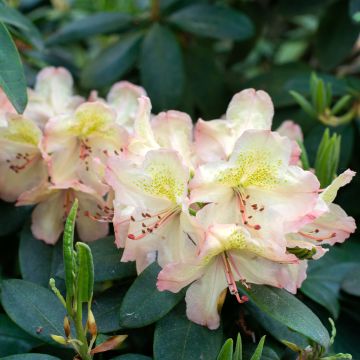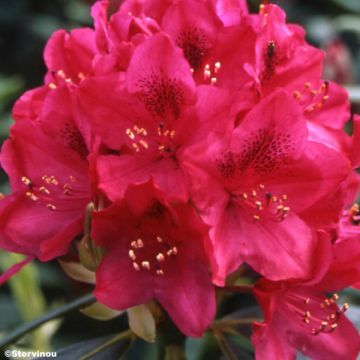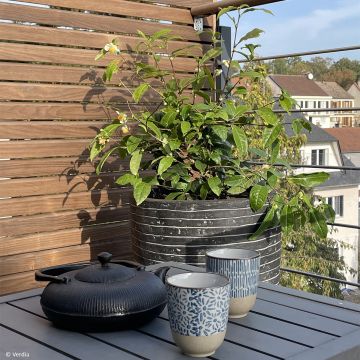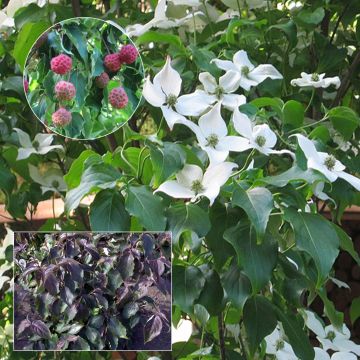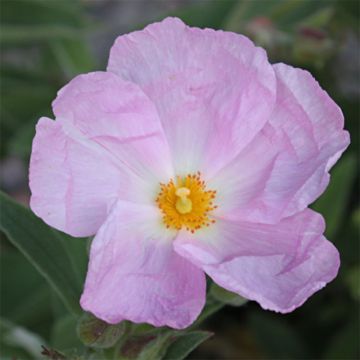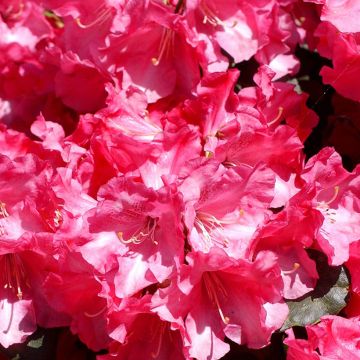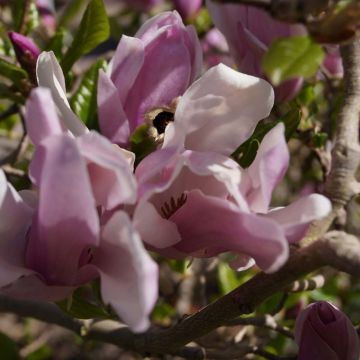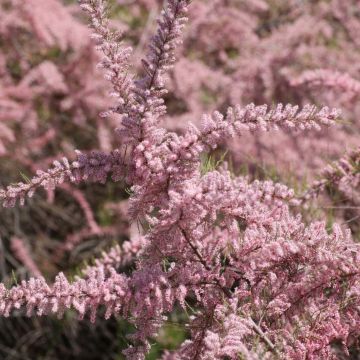

Corylus avellana Purple Umbrella - Hazel
Corylus avellana Purple Umbrella - Hazel
Corylus avellana 'JM 251' PURPLE UMBRELLA
Hazel, Common Hazel, European Hazel
This item cannot be shipped to the selected country
Oversize package delivery charge from €6.90
More information
Schedule delivery date,
and select date in basket
This plant carries a 24 months recovery warranty
More information
We guarantee the quality of our plants for a full growing cycle, and will replace at our expense any plant that fails to recover under normal climatic and planting conditions.
Oversize package: home delivery by special carrier from €6.90 per order..
Express home delivery from €8.90.
Does this plant fit my garden?
Set up your Plantfit profile →
Description
Corylus avellana 'Purple Umbrella' is a hazel bush with an evocative name. It is a very attractive small variety, with a trailing crown that forms an "umbrella" of purple foliage. In February-March, its bare branches are adorned with long pendulous catkins in a soft antique pink, swaying in the slightest breeze. Then its superb violet-purple foliage appears, which will become slightly greener in the heart of summer. Don't count on 'Purple Umbrella' to offer you a bountiful hazelnut harvest, as it bears fruit very little! However, it is a beautiful plant to grow in a small garden or in a large container on the terrace.
Corylus avellana 'JM 251' is a horticultural selection from the Hungarian breeder Józsa Miklós, introduced to the market in 2015 under the trade name 'Purple Umbrella'. It belongs to the Betulaceae family. The common hazel is native to temperate zones of the northern hemisphere. It is a small monoecious fruit tree, bearing separate male and female inflorescences on the same individual. The common hazel prefers light and neutral soil, fairly fertile, not too dry.
Corylus avellana 'Purple Umbrella' is grafted onto a trunk that can measure 1.20 to 1.50 m in height. This trunk is covered with grey bark. Its crown, more or less wide and regular, is composed of trailing branches. Its young hairy branches are purple, and they are covered with a light brown bark that will become very dark over time. The flowering occurs in two stages: in February-March, the male flowers appear, gathered in long and beautiful pendulous catkins coloured in old pink, loved by bees. In the second stage, the very discreet female flowers open in March-April. They have the shape of a bud measuring 6 to 8 mm, partially concealing bright red stigmas. The abundant foliage appears late in May. The leaves are round, strongly veined, and 6 to 10 cm long. Their predominantly purple colour, becomes slightly greener in summer for mature leaves. The foliage turns orange-yellow in autumn before falling off.
This 'Purple Umbrella' hazel will delight enthusiasts of unusual small trees. Easy to grow in ordinary soil, it is highly resistant to cold and tolerates limestone. Its small size is perfect for small gardens. It can be used as a standalone specimen or mixed with small bushes and perennial plants. This variety is also well suited for growing in a large pot. To enhance its beauty, plant a carpet of small periwinkles or white-flowered yarrows at its base, for example. Also consider early tulips like 'Albert Heijn' and grape hyacinths to accompany its early flowering.
Report an error about the product description
Plant habit
Flowering
Foliage
Safety measures
Botanical data
Corylus
avellana
'JM 251' PURPLE UMBRELLA
Betulaceae
Hazel, Common Hazel, European Hazel
Corylus avellana PURPLE UMBRELLA
Cultivar or hybrid
atteinterespiratoire
Cette plante peut entraîner des symptômes allergiques.
Evitez de la planter si vous ou vos proches souffrez de rhinite saisonnière ("rhume des foins").
Davantage d'informations sur https://plantes-risque.info
Other Corylus - Hazelnuts
Planting and care
Easy to grow and perfectly hardy, Corylus avellana 'Purple Umbrella' is well suited to most climates. It will adapt to any good garden soil that is not too dry, without excessive limestone or acidity. It appreciates a sunny location.
Planting period
Intended location
Care
This item has not been reviewed yet - be the first to leave a review about it.
Spring-flowering shrubs
Haven't found what you were looking for?
Hardiness is the lowest winter temperature a plant can endure without suffering serious damage or even dying. However, hardiness is affected by location (a sheltered area, such as a patio), protection (winter cover) and soil type (hardiness is improved by well-drained soil).

Photo Sharing Terms & Conditions
In order to encourage gardeners to interact and share their experiences, Promesse de fleurs offers various media enabling content to be uploaded onto its Site - in particular via the ‘Photo sharing’ module.
The User agrees to refrain from:
- Posting any content that is illegal, prejudicial, insulting, racist, inciteful to hatred, revisionist, contrary to public decency, that infringes on privacy or on the privacy rights of third parties, in particular the publicity rights of persons and goods, intellectual property rights, or the right to privacy.
- Submitting content on behalf of a third party;
- Impersonate the identity of a third party and/or publish any personal information about a third party;
In general, the User undertakes to refrain from any unethical behaviour.
All Content (in particular text, comments, files, images, photos, videos, creative works, etc.), which may be subject to property or intellectual property rights, image or other private rights, shall remain the property of the User, subject to the limited rights granted by the terms of the licence granted by Promesse de fleurs as stated below. Users are at liberty to publish or not to publish such Content on the Site, notably via the ‘Photo Sharing’ facility, and accept that this Content shall be made public and freely accessible, notably on the Internet.
Users further acknowledge, undertake to have ,and guarantee that they hold all necessary rights and permissions to publish such material on the Site, in particular with regard to the legislation in force pertaining to any privacy, property, intellectual property, image, or contractual rights, or rights of any other nature. By publishing such Content on the Site, Users acknowledge accepting full liability as publishers of the Content within the meaning of the law, and grant Promesse de fleurs, free of charge, an inclusive, worldwide licence for the said Content for the entire duration of its publication, including all reproduction, representation, up/downloading, displaying, performing, transmission, and storage rights.
Users also grant permission for their name to be linked to the Content and accept that this link may not always be made available.
By engaging in posting material, Users consent to their Content becoming automatically accessible on the Internet, in particular on other sites and/or blogs and/or web pages of the Promesse de fleurs site, including in particular social pages and the Promesse de fleurs catalogue.
Users may secure the removal of entrusted content free of charge by issuing a simple request via our contact form.
The flowering period indicated on our website applies to countries and regions located in USDA zone 8 (France, the United Kingdom, Ireland, the Netherlands, etc.)
It will vary according to where you live:
- In zones 9 to 10 (Italy, Spain, Greece, etc.), flowering will occur about 2 to 4 weeks earlier.
- In zones 6 to 7 (Germany, Poland, Slovenia, and lower mountainous regions), flowering will be delayed by 2 to 3 weeks.
- In zone 5 (Central Europe, Scandinavia), blooming will be delayed by 3 to 5 weeks.
In temperate climates, pruning of spring-flowering shrubs (forsythia, spireas, etc.) should be done just after flowering.
Pruning of summer-flowering shrubs (Indian Lilac, Perovskia, etc.) can be done in winter or spring.
In cold regions as well as with frost-sensitive plants, avoid pruning too early when severe frosts may still occur.
The planting period indicated on our website applies to countries and regions located in USDA zone 8 (France, United Kingdom, Ireland, Netherlands).
It will vary according to where you live:
- In Mediterranean zones (Marseille, Madrid, Milan, etc.), autumn and winter are the best planting periods.
- In continental zones (Strasbourg, Munich, Vienna, etc.), delay planting by 2 to 3 weeks in spring and bring it forward by 2 to 4 weeks in autumn.
- In mountainous regions (the Alps, Pyrenees, Carpathians, etc.), it is best to plant in late spring (May-June) or late summer (August-September).
The harvesting period indicated on our website applies to countries and regions in USDA zone 8 (France, England, Ireland, the Netherlands).
In colder areas (Scandinavia, Poland, Austria...) fruit and vegetable harvests are likely to be delayed by 3-4 weeks.
In warmer areas (Italy, Spain, Greece, etc.), harvesting will probably take place earlier, depending on weather conditions.
The sowing periods indicated on our website apply to countries and regions within USDA Zone 8 (France, UK, Ireland, Netherlands).
In colder areas (Scandinavia, Poland, Austria...), delay any outdoor sowing by 3-4 weeks, or sow under glass.
In warmer climes (Italy, Spain, Greece, etc.), bring outdoor sowing forward by a few weeks.

































